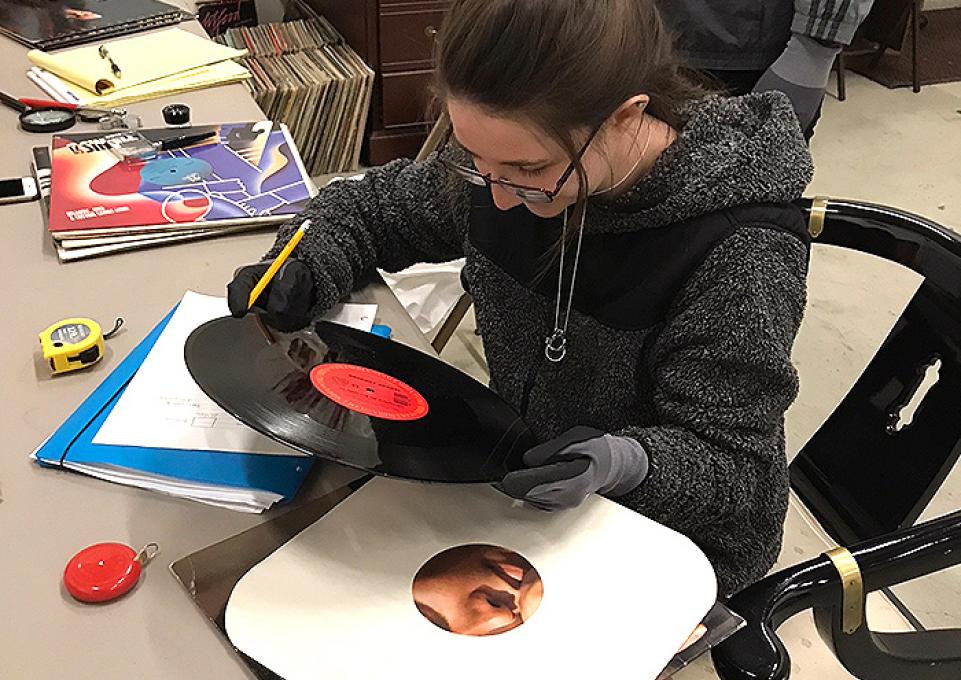
The philosophy of the museum studies program is to inspire students by getting them involved. “With a real project, studying museum administration becomes relevant—even interesting and exciting,” said Cynthia Conides, associate professor of history and social studies education and director of the museum studies program.
For three semesters, students in the master’s program have been inspired by service-learning courses, thanks to a partnership with a proposed museum about WUFO-AM. Mark Dabney has been a student in classes that have worked with the WUFO Black Radio History Museum. He now serves as the new museum’s interim deputy director. With a long-time career as an art appraiser specializing in twentieth-century African American art and cultural literature, he brings a wealth of experience to both the museum and to the museum studies program. “I’ve done extensive research into African American history and culture,” he said, “so I know how to look for information relating to WUFO.”
Buffalo’s First Radio Station Serving African Americans
In 1961, WUFO-AM became Buffalo’s first station catering to an African American audience. Sheila Brown, who joined the station as a sales representative in 1986, became its owner in 2013 after a series of successful business ventures. Under her leadership, the station expanded to the FM band as Power 96.5. But she also wanted to preserve the historic legacy of WUFO.
“That’s the value of museums,” said Conides. “WUFO’s history is integral to the African American community in Buffalo. It’s part of the American story as well as part of the Buffalo story.”
Conides and Brown both serve on the Michigan Street African American Heritage Corridor Commission. Conides, with students in her museum administration class in spring 2017, took on the challenge of creating a museum at WUFO’s historic site at 143 Broadway in Buffalo. The students’ goal was to create an operations manual for the museum. “We included bylaws for starting and running it,” said Conides. “We thought about who would be on its board of directors, and how to acquire members. And we had to come up with ideas for raising money, because there wasn’t any.” They also developed a concept for the space.
Faculty, Students Make the Program Great
For Dabney, collaboration with faculty members and his fellow students has been the most valuable part of the program. “The students share information and push each other,” he said. “I’m having a wonderful time and an incredible experience, especially with my classmates. It’s been very energetic, innovative, and sometimes provocative. It’s not the institution that makes a great program, it’s the students and faculty.”
“After our first class, Sheila wanted us to continue," said Conides. “So we went to the planning phase in the museum planning course in fall 2017. It was exciting to have an opportunity to work with a real live up-and-coming museum. We worked together to create a plan by focusing on the question, ‘You have the dream; how do you make it real?’”
The class did a lot of brainstorming, and selected the best ideas. With Brown, they looked at similar museums—museums devoted to music, the blues, jazz, and radio that have been developed in the last 10 or 15 years. They also looked at museums that shared similar characteristics such as size, location, budget, and an African American orientation, and interviewed people at key museums. With a plan in place, the museum is moving toward opening to the public in 2018. This semester, students in museum registration methods taught by lecturer Noelle Wiedemer are inventorying material and proposing exhibits.
“Our alumni graduate with hands-on experience, and they are doing wonderful things all over Western New York,” said Conides. “I’m thrilled that we’re now part of safeguarding the legacy of the Michigan Street African American Heritage Corridor.”
Pictured: Museum studies student Mary Langille. Photo by Noelle Wiedemer.
